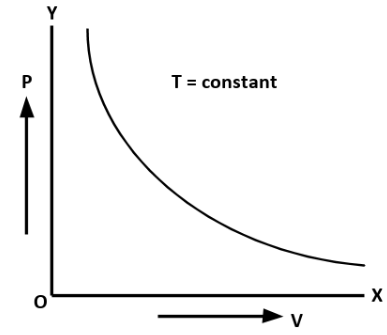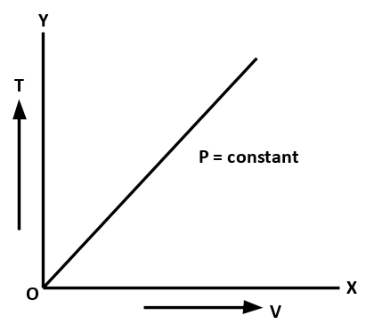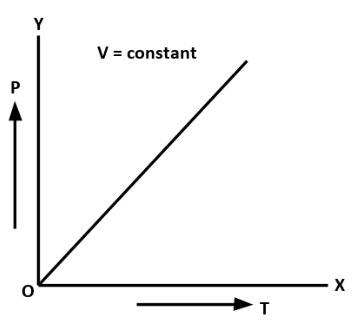
How are the graphs for
A. Boyle’s Law
B. Pressure Law
C. Charles law
Answer
468.3k+ views
1 likes
Hint:Boyle’s Law gives the relation between pressure and volume when the temperature is constant. Therefore, Boyle’s Law gives the graph for pressure versus volume. Charles Law gives the relation between volume and temperature of a gas at constant pressure. It gives a graph of temperature versus volume. Similarly, Pressure Law gives the relation between pressure and temperature at constant volume. Therefore, it gives the graph of pressure versus temperature.
Formula Used:
Boyle’s Law is given as:
Charles Law is given as:
Pressure Law is given as:
where,
Complete step by step answer:
Boyle’s Law, Pressure Law and Charles law are the three gas laws. The properties of a gas depends upon pressure
A. Boyle’s Law: At constant temperature for a given mass of ideal gas, the volume of the gas is inversely proportional to its pressure.
where,
The graph between pressure and volume at constant temperature is known as isotherm.

B. Charles Law: At constant pressure, volume of a given mass of gas is directly proportional to its absolute temperature.
The curves between volume and temperature at constant pressure are called Isobars.

C. Pressure Law: At constant volume, the pressure of a given mass of an ideal gas is directly proportional to the absolute temperature of the gas.
The graph for pressure law is as follows

Note: In Boyle’s law, the volume of a given gas is inversely proportional to its pressure. Therefore, pressure times volume will be a constant term. That is
Formula Used:
Boyle’s Law is given as:
Charles Law is given as:
Pressure Law is given as:
where,
Complete step by step answer:
Boyle’s Law, Pressure Law and Charles law are the three gas laws. The properties of a gas depends upon pressure
A. Boyle’s Law: At constant temperature for a given mass of ideal gas, the volume of the gas is inversely proportional to its pressure.
where,
The graph between pressure and volume at constant temperature is known as isotherm.

B. Charles Law: At constant pressure, volume of a given mass of gas is directly proportional to its absolute temperature.
The curves between volume and temperature at constant pressure are called Isobars.

C. Pressure Law: At constant volume, the pressure of a given mass of an ideal gas is directly proportional to the absolute temperature of the gas.
The graph for pressure law is as follows

Note: In Boyle’s law, the volume of a given gas is inversely proportional to its pressure. Therefore, pressure times volume will be a constant term. That is
Recently Updated Pages
Master Class 11 Economics: Engaging Questions & Answers for Success

Master Class 11 Business Studies: Engaging Questions & Answers for Success

Master Class 11 Accountancy: Engaging Questions & Answers for Success

Master Class 11 English: Engaging Questions & Answers for Success

Master Class 11 Computer Science: Engaging Questions & Answers for Success

Master Class 11 Maths: Engaging Questions & Answers for Success

Trending doubts
State and prove Bernoullis theorem class 11 physics CBSE

1 ton equals to A 100 kg B 1000 kg C 10 kg D 10000 class 11 physics CBSE

State the laws of reflection of light

One Metric ton is equal to kg A 10000 B 1000 C 100 class 11 physics CBSE

Difference Between Prokaryotic Cells and Eukaryotic Cells

1 Quintal is equal to a 110 kg b 10 kg c 100kg d 1000 class 11 physics CBSE




